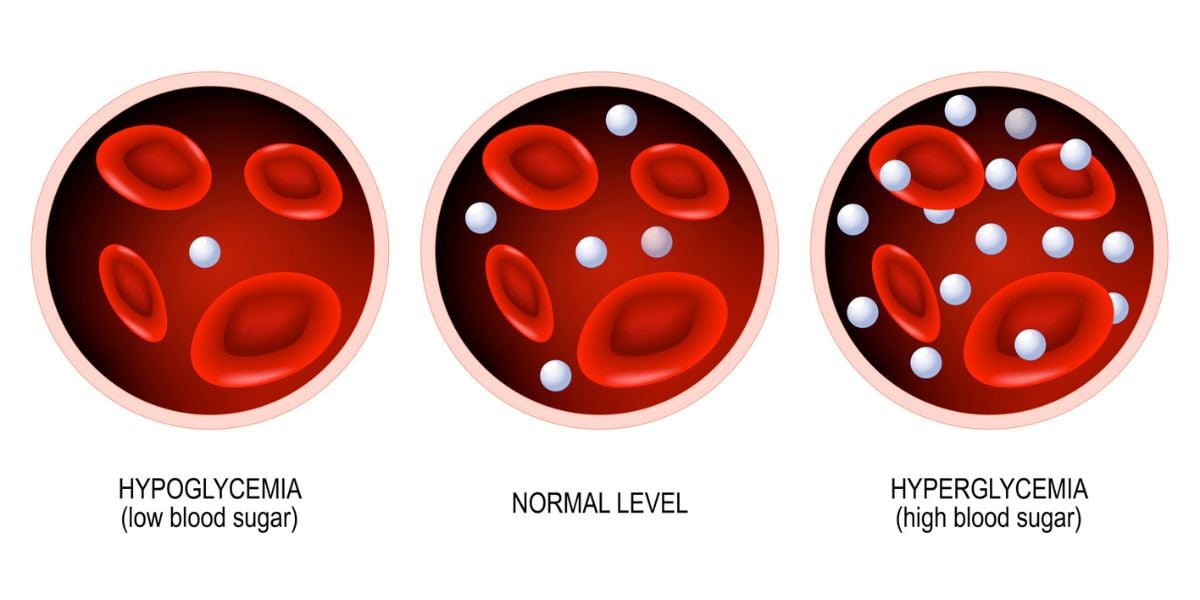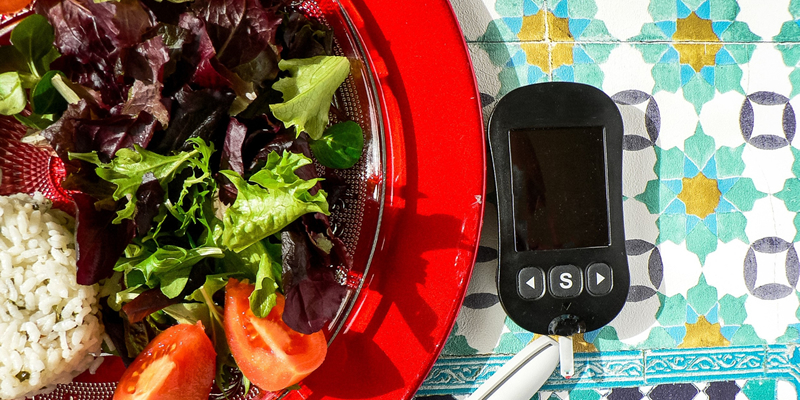With a bit of knowledge and dedication, type 2 diabetes can be controlled.
For those looking to get stuck into type 2 diabetes management, we’ve compiled a guide to help you understand the condition and improve your health.
HbA1c or blood glucose testing?
There are two main methods of monitoring blood glucose levels: regular blood sugar tests and an HbA1c test.
An HbA1c test will usually be taken at intervals of three, six or 12 months. The result gives a good guide to how well controlled your blood glucose levels are over a period of two to three months leading up to the test. This allows you to see whether you’re on the right track or how close to being on the right track you are.
Blood glucose testing tells you what your blood sugar level is at the precise time you test. Regular testing can be very useful for analysing which factors affect your blood sugar levels and by how much.
What can we learn from an HbA1c test?
The target HbA1c value for people with type 2 diabetes is 6.5% or 48 mmol/mol.
If you get an HbA1c result at this level or below, you’re on the right track with your diabetes control.
If your HbA1c result is above this target, there is room for some improvement. You may need to incorporate a little more activity into your week, make some changes to your diet or ask your doctor to prescribe a different form of medication.
If there’s one criticism of HbA1c, it’s that it doesn’t always make it easy to work out which individual changes are the most effective for lowering your blood sugar levels or which elements of your lifestyle are having a negative influence.
How can blood glucose testing help?
HbA1c gives a general big picture of how well controlled your sugar levels are, while blood glucose testing can help fill in some of the detail.
Target blood glucose levels for people with type 2 diabetes are:
- 4 to 7 mmol/l before meals and when fasting
- 4 to 8.5 mmol/l 2 hours following meals
Not everyone with type 2 diabetes is given blood glucose testing supplies on prescription. If your doctor is not willing to prescribe testing supplies, you will need to consider whether to buy testing supplies.
Whilst testing supplies are far from cheap, they can often be very useful for those looking to get to grips with understanding how blood glucose levels vary following different meals.
Diet and controlling blood sugar levels
Making informed diet choices is one of the main ways in which we can help to control diabetes.
- Read more about diet and type 2 diabetes
Blood glucose testing can be very helpful for reviewing how different foods affect blood sugar levels.
A good way to do this is to take a test before eating, and then another one or two tests after eating, at intervals of around two and four hours after a meal.
This method of blood glucose testing is known as pre- and post-prandial testing Testing your blood sugar this way across a variety of meals can help you deduce which meals are better for your sugar levels.
You can also begin to work out what portions of a particular food type your body can tolerate without raising your sugar levels too high.
Low-carbohydrate diets have shown to be effective in people with type 2 diabetes, leading to improved blood glucose levels and reducing dependency on medication. Diabetes.co.uk’s award-winning Low Carb Program provides NHS certified nutrition education and tracking tools to help people with type 2 diabetes and prediabetes reduce their HbA1c and weight.
Exercise
Exercise plays a very useful role in type 2 diabetes. As we exercise, our muscles use stored glucose (glycogen), as well as glucose that is available in our blood, as fuel.
Following physical activity, our muscles will then look to replenish their stores of glycogen and take in glucose from the blood.
Exercise should have a beneficial effect on blood glucose levels. To see the effect exercise may be having, it can be helpful to test your blood sugar at the same time of day – e.g. first thing in the morning – and see whether more active days are followed by a lower blood glucose reading in the morning.
Note that a number of factors can affect blood glucose levels so don’t be put off if your blood sugar levels do not fall following exercise.
You may also wish to test before, during and after exercise to measure how your blood glucose levels are responding. Some forms of exercise may trigger your body to initially raise blood glucose levels, but you should find your levels come back down after a moderate duration of exercise.
- Read more on diabetes and exercise
Weight loss and blood glucose control
Research indicates that a larger waistline can have a direct effect on insulin resistance. The larger our waistline, the more resistant to insulin our bodies become and therefore our blood glucose levels increase.
Therefore, losing weight and reducing waist size can improve insulin sensitive and thereby improve blood glucose levels.
- Read more about diabetes and weight loss
Medication
Type 2 diabetes medication can help blood glucose levels from rising too high. Some of us may be able to keep our blood glucose levels in the right range without needing medication, but the majority of people with type 2 diabetes take some form of medication.
Whilst most people tend to move onto stronger medication as they live longer with diabetes, it is not hugely uncommon for some people with type 2 diabetes to move onto less strong medication, or even come off medication, if they are able to make significant improvements to their blood glucose levels.
- Read more on reversing diabetes
Join in on the forum
The Diabetes Forum has helped large numbers of people with type 2 diabetes understand and take control of their condition.
Join in and learn from others in the same position as you on the Type 2 diabetes forum






